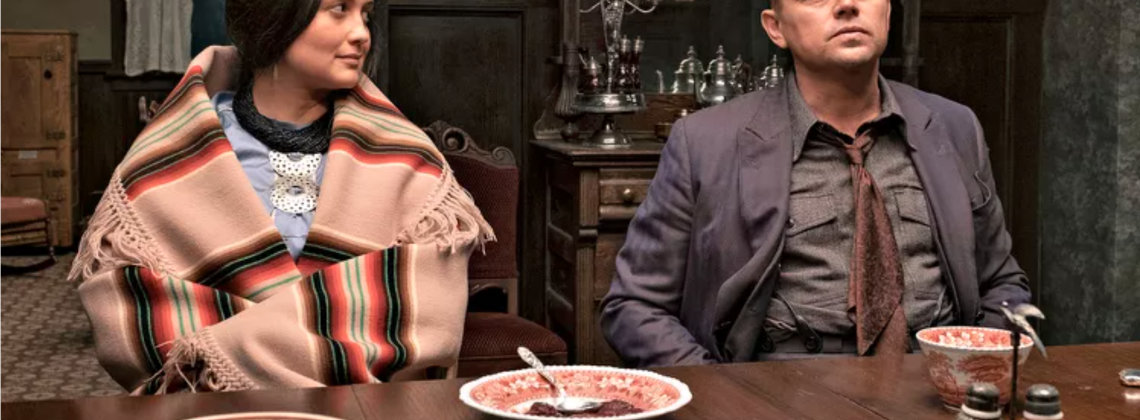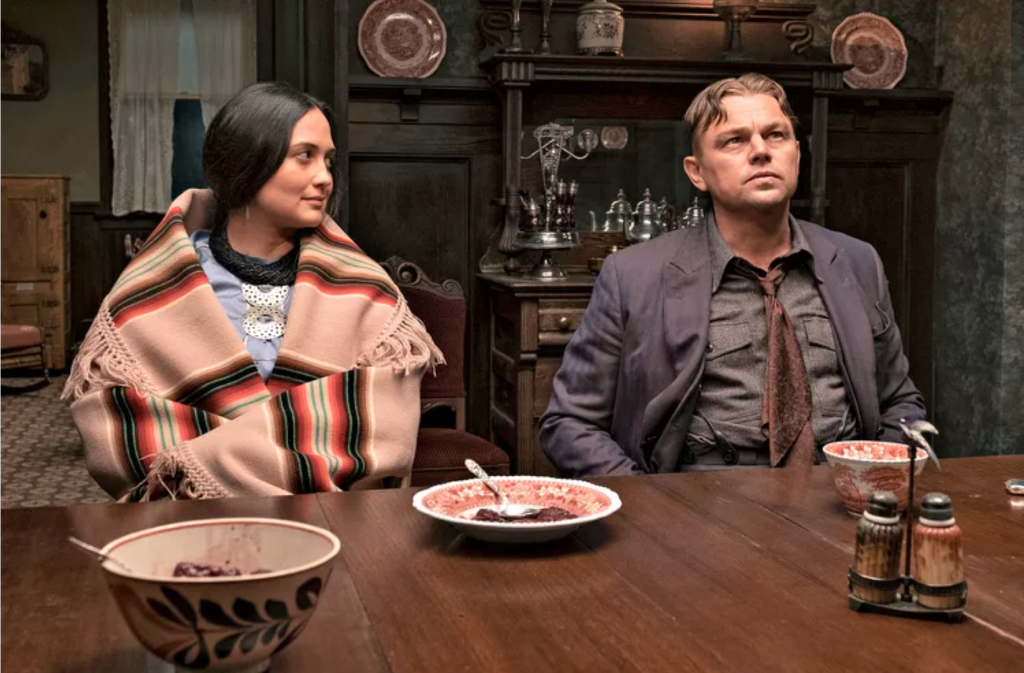

The uncompromising message and compromised artistry of Killers of the Flower Moon
It’s now a truism to say that Martin Scorsese is the greatest living American filmmaker. Certainly no director has had as long and storied a career as Scorsese has in the half-century since his first major studio release, Mean Streets (1973). And he’s still at it, developing a film version of David Grann’s recent bestseller The Wager. Scorsese’s most recent release, also based on a Grann bestseller, debuted on Apple TV this month, and is getting a lot of Oscar buzz along with some rave reviews.
But as a Scorsese film, Killers of the Flower Moon is a failure.
In calling Killers a failure, I am not suggesting it isn’t eminently worth watching. There is simply no one in the world better than Scorsese at telling a story with pictures, and this one is chock full of memorable images (consider for example, the one of indigenous people doing a celebratory dance as a derrick erupts with oil). And the tale he tells—of the murderous exploitation of the Osage people of Oklahoma in the 1920s—deserves sustained attention of the kind he provides. But Killers of the Flower Moon simply strays too far from Scorsese’s native ground, lacks narrative discipline, and reflects an artistic compromise in the form of the message the patrons who funded this picture paid him to deliver.
Scorsese has of course made a great many movies about a great many things in the last fifty years—not just gangster films but also period pieces that range from The Age of Innocence (1993) to Silence (2016). But whatever their variety, there’s been a constant theme grounded in the working-class Catholicism of his youth, and that is the (often feral) allure of evil. His deep engagement with charismatic people who do awful things—think Ray Liotta in Good Fellas (1990) or Daniel Day-Lewis in Gangs of New York (2002)—has sometimes led critics to regard him as an apologist for them. This discourse was especially obvious after the release of The Wolf of Wall Street (2013), where he was accused of implicitly endorsing, even celebrating, the corruption and lechery of the real-life Jordan Belfort. But at his best Scorsese implicates us in the sins he depicts, asking us to grapple with visceral appeal of bad behavior and the discipline it takes to reject it, as well as to consider moral codes we might otherwise summarily reject.
All of this is missing from Killers of the Flower Moon. It depicts perfectly awful people doing perfectly awful things—humorlessly, and at great length. One of things that makes David Grann’s book version of the story so remarkable is that it succeeds on so many levels: as a whodunit, as a courtroom drama, as a tour de force of forensic history. But the film version drops most of this—notably most of an FBI angle that contributes a lot of narrative tension—and makes it a dreary story of corruption. We know pretty much from the start that DeNiro’s character, Bill Hale, is the villain of the story, and it’s literally hours before the story moves toward any resolution. The acting is wonderful—notably that of Lily Gladstone as a survivor of repeated miseries—and the production design is pitch perfect. But there’s a flatness here that begins to seem unrelenting.
I suspect that a lot of the reason for this is political. In 2023 it’s simply not possible to get financing in order to tell a story of racism in which the racists are anything other than evil or stupid (to his credit, it takes a smart actor like DiCaprio to play a dim-witted man), or that shows J. Edgar Hoover’s FBI in anything other in a morally compromising light (which, admittedly, is difficult to do, especially when it comes to Hoover himself). Actually, major movie studios have not been willing to foot the bill for the kind of expensive and expansive filmmaking Scorsese wants to do, and he had to rely on Netflix for the money to make The Irishman. Apple TV is very much a blue state enterprise, and one that is going to back blue state projects.
It’s not exactly that any of this is blameworthy. Certainly, Scorsese has been willing to direct small personal films that he knew wouldn’t make much money (like Kundun in 1997, which infuriated the Chinese government—something that is essentially forbidden in contemporary Hollywood). Making movies is a highly capitalistic enterprise that takes lots of money, and any filmmaker is going to have to make all kinds of compromises in the process of realizing a vision. It’s remarkable that Scorsese has succeeded as often as he has for as long as he has. But we’re not operating in an ideological environment that allows for much in the way of moral complexity. It’s always a struggle to keep our balance, and it helps to have some clarity as we do. Which is why it may be useful to state that this is simply not Scorsese at his best because it doesn’t allow the ambiguities that even the most morally forceful works of art require.
Nevertheless, we’re blessed to have him.
Jim Cullen, who teaches at the Greenwich Country Day School in Greenwich Connecticut, is the author of Martin Scorsese and the American Dream. His most recent book is Bridge & Tunnel Boys: Bruce Springsteen, Billy Joel, and the Metropolitan Sound of the American Century.
Photo Credit: Melinda Sue Gordon/Apple